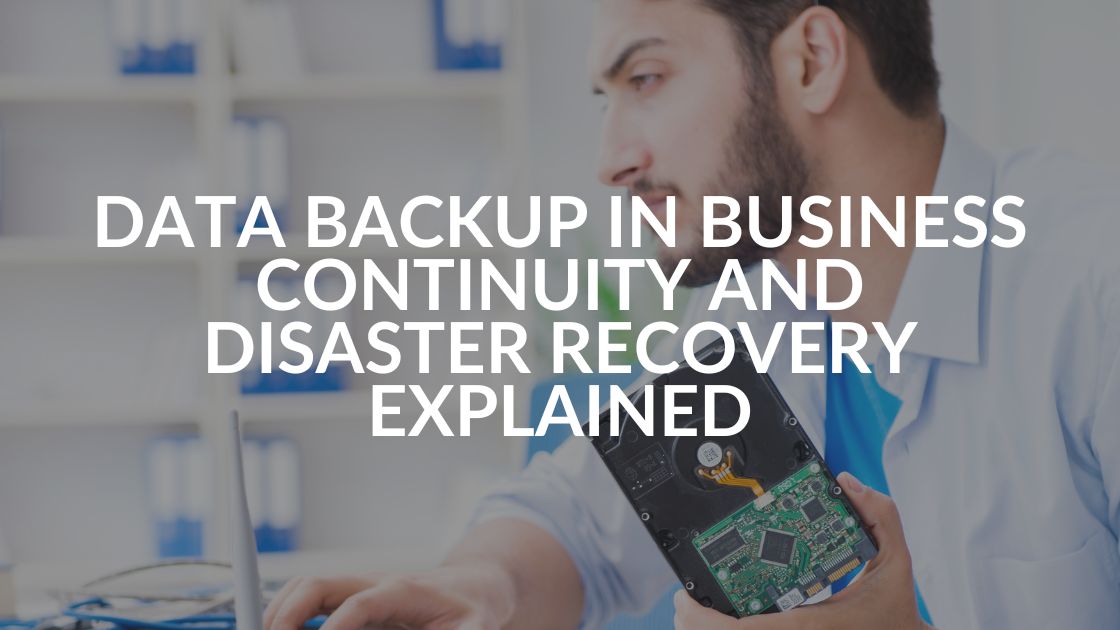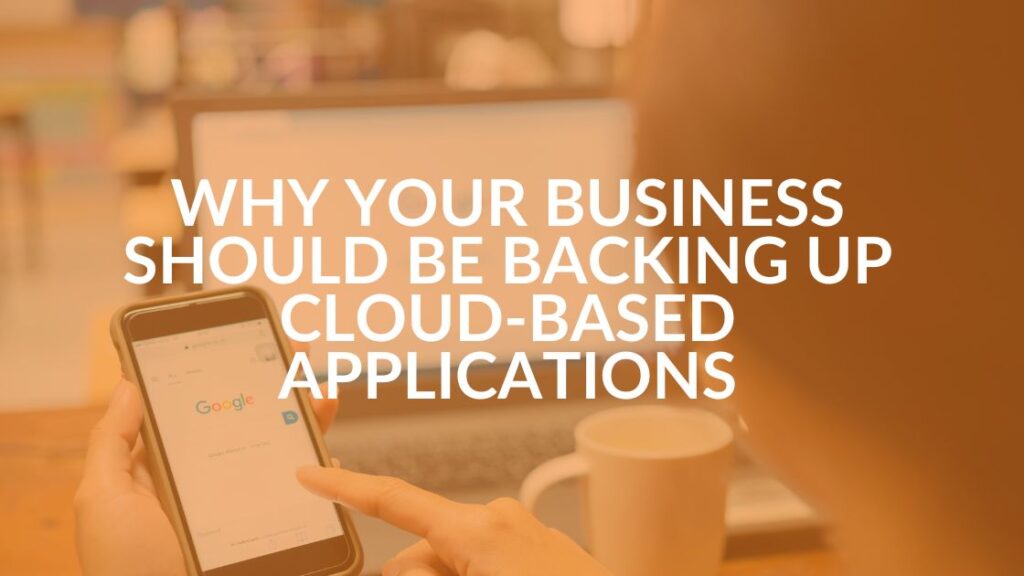The Crucial Role of Data Backup in Business Continuity and Disaster Recovery

Data is the lifeblood of any modern business operation. All organizations rely heavily on digital information, from customer and financial records to operational data.
But what happens when an IT failure happens or disaster strikes?
As an expert managed service provider, we know that the importance of an enterprise-level data backup in business continuity and disaster recovery solutions becomes glaringly apparent.
Data Backup in Business Continuity and Disaster Recovery Explained
Business continuity planning (BCP) and disaster recovery (DR) are critical in mitigating the effects of unexpected disruptions. Whether it’s a natural disaster, cyberattack, hardware failure or human error, these cyber security events can compromise data integrity and accessibility, leading to catastrophic consequences for any organization.
A robust data backup strategy is the cornerstone of effective BCP and DR, ensuring business operations can be quickly restored following unplanned disruption to minimize the negative impact on internal productivity and the inability to serve customers.
The Ins and Outs of Data Backup
Data backup in business continuity involves creating virtual server-level images of data, including the Microsoft operating system, that can be quickly restored if the original data is lost or compromised. Regular backups ensure that the most recent data is always available, minimizing the potential loss in a disaster.
This is particularly crucial for businesses that operate in data-sensitive industries, where data loss can lead to compliance issues, financial penalties and reputational damage.
You Need More Than Just a Backup Plan
When you’re thinking about business continuity, be aware that having a backup is not enough. The data backup strategy should be part of a broader BCP and DR plan that includes identifying critical data and systems, defining recovery objectives and outlining the steps to restore operations.
Here’s a piece of advice from IT support experts: This plan must consist of backing up your Microsoft 365 environment and understanding how the software providers back up their cloud-based applications. The backup strategy should also consider the frequency of backups, identify the data to backup and automate off-site cloud-based storage.
The Role of Cloud-Based Solutions
Cloud-based backup solutions have gained popularity due to their scalability, cost-effectiveness and ease of use. Besides automated backup processes, they provide encrypted security measures to protect data from cyber threats. Furthermore, cloud backups are typically stored in multiple data center locations, which adds an extra layer of protection against data loss due to localized disasters.
However, merely having a backup plan does not guarantee its effectiveness. Regular backup system testing is vital to ensure data can be recovered accurately and promptly.
Testing allows businesses to identify and address potential issues before a disaster strikes. And, if you want to prevent other potential future cybersecurity issues, get a vulnerability assessment.
Achieve Optimal Protection With the 3-2-1 Rule
Businesses should also deploy the “3-2-1 backup rule” for optimal data protection. This rule suggests having at least three copies of data, stored on two different types of storage platforms, with one copy stored off-site.
This essential rule provides multiple recovery points and protects against numerous risk factors.
Wrapping Up: Data Backup in Business Continuity
Data backup is integral to business continuity and disaster recovery planning. In today’s data-driven world, where the threat landscape continually evolves, businesses cannot overlook the importance of a comprehensive data backup strategy.
By implementing a vigorous business continuity and disaster recovery solution and regularly testing backups, organizations of all sizes can safeguard their valuable data, including sensitive customer information, ensuring they can bounce back quickly and efficiently from any technical or environmental operational disruption.Want to make IT easy on yourself? Schedule a no-obligation consultation with us to discuss your data backup and disaster recovery needs.
Share this Blog

Is Your Name or Birthday a Part of Your Password?
If so, you’re a part of the 59 percent of people who don’t follow proper password hygiene. More than 70 percent of passwords are used for more than one system, meaning if cybercriminals crack one, they can access a lot more accounts.
Our free Enterprise Password Management Guide will give you the best password hygiene practices to help you secure your computer and your business.
Download the Guide
Explore the Latest Trends in IT

Microsoft 365 and Google Workspace: The Importance of Backing Up Your Cloud-Based Applications

AI Guiding Principles

Edge vs Chrome Security: Which Is the Best Browser for Your Business?




